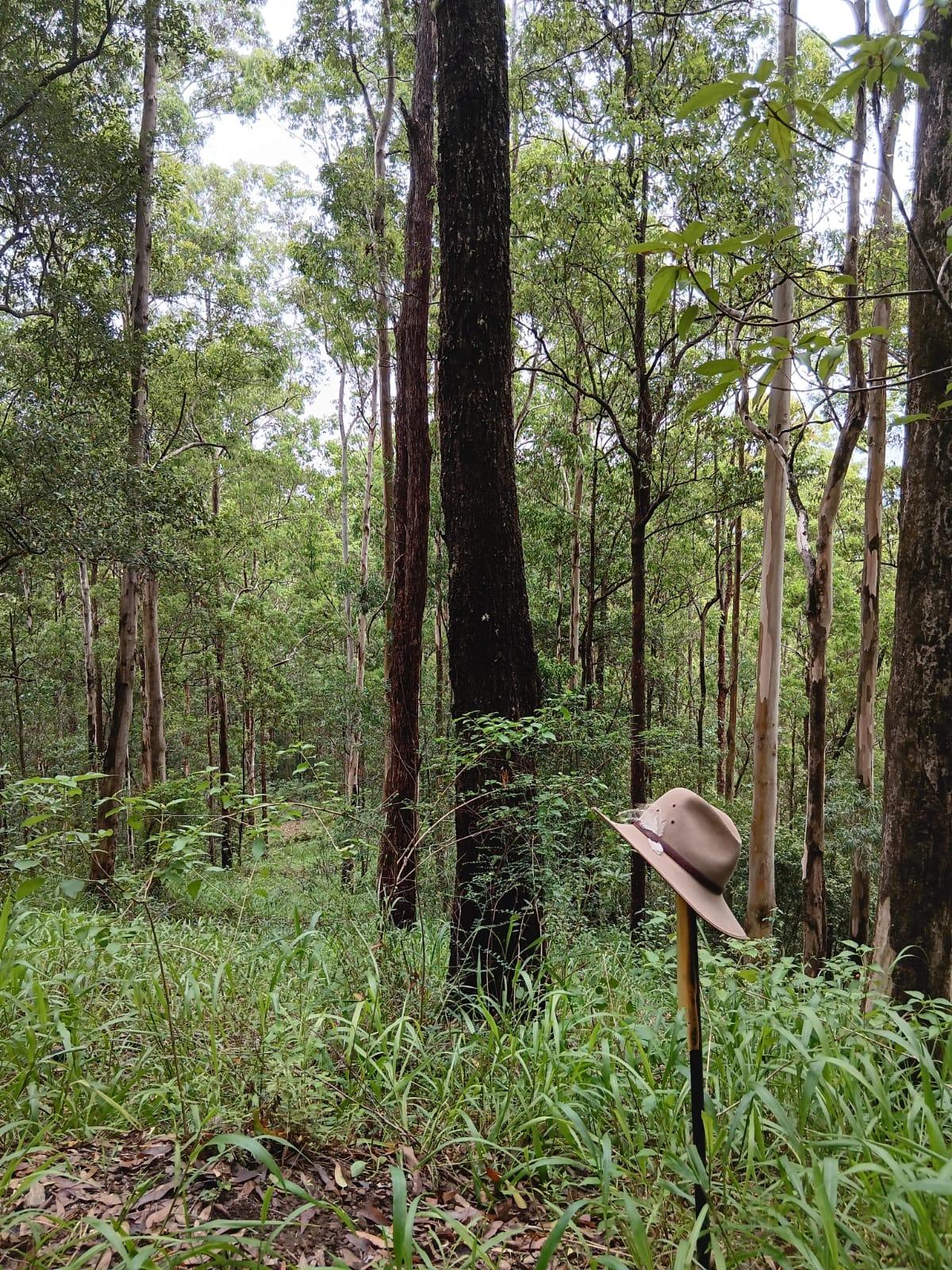Project start date: 01/07/2024
Project end date: 30/06/2027
NESP funding: $1,722,000 (GST-exclusive)
The Australia state of the environment 2021 report outlined the continuing decline of Australian biodiversity and degradation of Australian ecosystems.
Restoring the health of our environments is going to require a concerted effort involving increased investment in conservation and land management, but also a more effective return on the investments that are made.

Surveying NSW Biodiversity Conservation Trust management plots, northern NSW. Photo: Josh Lee.
To achieve the best outcomes for biodiversity we need to understand what social and ecological factors contribute to the success of restoration programs. By looking at past and present successes around Australia, we can make recommendations to improve future programs.
To inform restoration program decision-making, this program is answering 2 fundamental questions:
This is being achieved through a series of activities involving stakeholder engagement, examination of existing restoration monitoring and evaluation methods, and evaluation of biodiversity outcomes from existing projects.
Key research areas
To improve the outcomes for biodiversity from restoration programs, this project is:
Project leader
The project is being led by Associate Professor Martin Breed and Dr Jake Robinson from Flinders University, Associate Professor Rachael Gallagher from Western Sydney University, Associate Professor Vanessa Adams from the University of Tasmania, Professor Susan Laurance from James Cook University and Dr Angela Dean from University of Queensland.
Contact
For further information, contact martin.breed@flinders.edu.au, rachael.gallagher@westernsydney.edu.au, vm.adams@utas.edu.au, susan.laurance@jcu.edu.au, a.dean@uq.edu.au or nesplandscapes@uwa.edu.au.
Research users
People